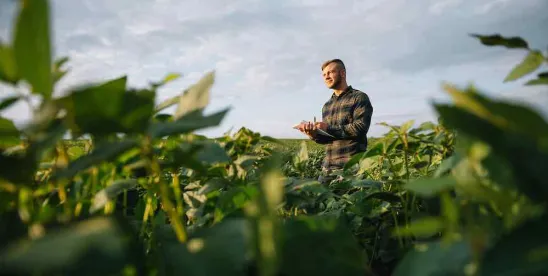On November 13, 2024, the U.S. Environmental Protection Agency (EPA) announced the release of its interim guidance and additional materials to support the regulatory community in implementing the requirements of the October 4, 2024, final rule for the Agricultural Worker Protection Standard (WPS) Application Exclusion Zone (AEZ) (2024 AEZ Rule). EPA also has created a Frequently Asked Questions (FAQ) document regarding the rulemaking, as well as a chart comparing the differences between the 2015 WPS, the 2020 AEZ Rule that never went into effect, and the 2024 AEZ Rule.
The interim guidance addresses topics such as compliance with AEZs that extend off-establishment, determining the size of the AEZ using the American Society of Agricultural and Biological Engineers standards for droplet size, and the exemption for immediate family. EPA states it plans to revise this guidance over time in response to various stakeholders’ questions and needs. EPA encourages suggestions for additional guidance topics and improvements, which can be submitted to opp_occupational_pesticide_safety@epa.gov. EPA states this interim guidance supersedes all of EPA’s previous guidance on the AEZ and will be effective on December 3, 2024, when the final AEZ rule goes into effect.
AEZ Rule History
According to EPA, the WPS regulation offers protections to over two million agricultural workers (and their families) and pesticide handlers who work at over 600,000 agricultural establishments. In 2015, EPA made significant changes to the regulation to reduce incidents of pesticide exposure for farmworkers and their family members. Among the changes, the revised standard includes a new provision requiring agricultural employers to keep workers and all other individuals out of the AEZ area during outdoor pesticide applications. The AEZ is the area surrounding an ongoing pesticide application that people must not enter to avoid exposure. EPA states that an AEZ moves with the equipment during applications to protect farmworkers and bystanders who could come in contact with pesticides.
In 2020, EPA published a rule specific to AEZ requirements, limiting the applicability of the protections to agricultural employers’ property and shrinking the AEZ size from 100 feet to 25 feet for some ground-based spray applications. Prior to the effective date of the 2020 AEZ Rule, petitions were filed in the U.S. District Court for the Southern District of New York (SDNY) and in the U.S. Second Circuit Court of Appeals challenging the 2020 AEZ Rule. The SDNY issued an order granting the petitioners’ request for a temporary restraining order and preliminary injunction enjoining the effective date of the rule. As a result, the 2020 AEZ Rule never went into effect.
2024 AEZ Rule
In 2021, EPA began reviewing the 2020 AEZ Rule in accordance with Executive Order 13990, Protecting Public Health and the Environment and Restoring Science to Tackle the Climate Crisis. EPA states it determined that certain provisions in the 2020 AEZ Rule that weakened protections for farmworkers and nearby communities from pesticide exposure should be rescinded. EPA’s proposed rule to reinstate several provisions of the 2015 rule was published in March 2023, and issued in final in October 2024. 2015 WPS provisions that were reinstated in the 2024 AEZ Rule include:
- 1. The AEZ suspension requirement will apply beyond the boundaries of the agricultural establishment.
- 2. The AEZ suspension requirement will apply in easements on the establishment (for example, easements for utility workers to access telephone lines).
- 3. The AEZ distance for ground-based applications will be:
- a. 25 feet for applications with medium or larger droplets when sprayed from a height greater than 12 inches from the soil surface or planting medium.
- b. 100 feet for applications with fine droplets.
- a. 25 feet for applications with medium or larger droplets when sprayed from a height greater than 12 inches from the soil surface or planting medium.
Additionally, the final rule includes two revisions that EPA states it believes will provide clarity and flexibility for growers and farming families without increasing risk to farmworkers and bystanders:
- 1. An “immediate family exemption” that allows farm owners and their immediate family to remain inside enclosed structures or homes during pesticide application. This exemption, which is limited to farming families, provides them the flexibility to decide whether to stay on-site during pesticide applications, rather than compelling them to leave even when they feel safe remaining in their own homes.
- 2. A clarification that suspended pesticide applications can resume only after people leave the AEZ.
Additional information on the AEZ can be found here.
Commentary
The AEZ rules and their requirements regarding the size and conditions of use when pesticide applications would have to be stopped have been somewhat controversial since its initial promulgation in 2015. As the background here explains, there were revisions by the first Administration of President-elect Trump (i.e., the 2020 AEZ Rule), most of those revisions are reversed during the Biden Administration with the 2024 AEZ Rule, and in the end, it is now likely that the new Administration will revert back to essentially the same position promulgated under President-elect Trump’s first term.
Throughout the development of these provisions, the primary criticism of the original 2015 rule was that the application requirements already prohibited exposures when applying pesticides to bystanders and workers. The “tricky” issue centers on what is appropriate when there is an unexpected or occasional entry of a delivery vehicle (e.g.,Amazon deliveries) or an unexpected non-family member into a treatment area who then might be exposed to drift from a pesticide application. The issue became part of the discussion concerning confirmation of the Administration appointees during President-elect Trump’s first term; with Senate control now in the hands of a Republican majority, any intended changes to the now-current rule are unlikely to be a significant factor in the confirmation debate about incoming EPA political appointees.




 />i
/>i

